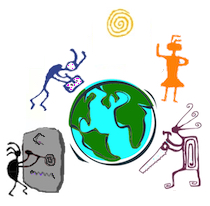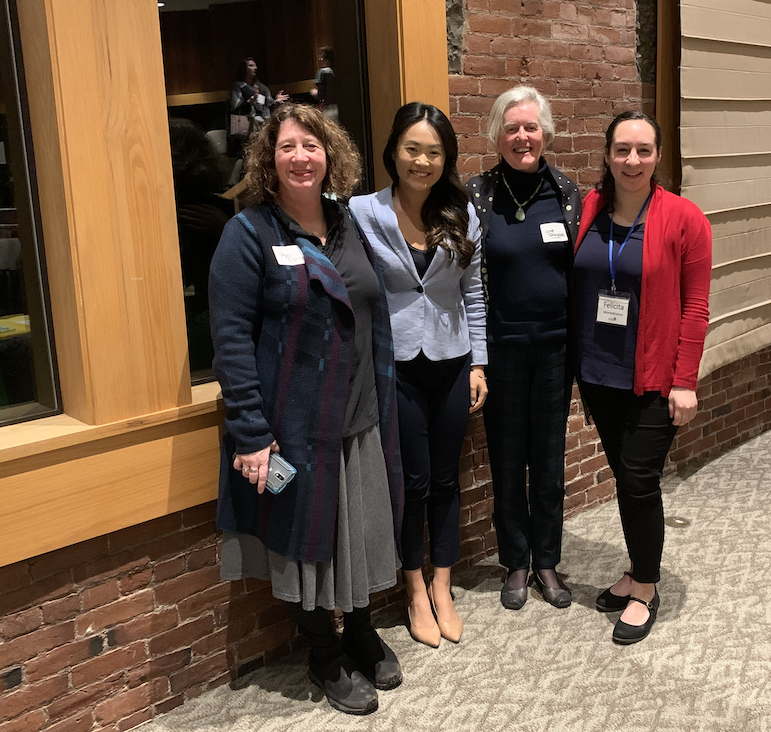
If you are a nonprofit focused on helping the homeless, addressing hunger or nutrition, helping people with a chronic illness or children or seniors, helping people with addiction issues, your services are still hugely in demand and it’s easy for people to see how your nonprofit is relevant during COVID19 and all that it’s bringing to individuals and the community-at-large, like unemployment, social isolation and being homebound without onsite visits. I’ve noticed many nonprofits trying to address domestic violence have done an excellent job at messaging these days, noting that the requirements to stay at home have created a very dangerous scenario for those they try to serve and what they are trying to do to address that. If you represent such a nonprofit, you may even have seen a spike in donations as a result.
But if you are a nonprofit focused on live theater, artwork, dance, history, recycling or some other thing that isn’t directly, obviously related to the consequences of COVID19, it can feel like you are being lost amid all the calls for continuing to support nonprofits and addressing this pandemic.
ALL NONPROFIT ORGANIZATIONS MATTER to SOMEONE, at the very least. If a nonprofit doesn’t matter, it shouldn’t exist.
This is not the time to pause your nonprofit’s communications, wait for things to get better and hope people will remember your nonprofit when we’re through this, or to think that relaunching your public activities once public gatherings can happen again will immediately bring people back to engaging with your program and supporting it financially. Instead, your nonprofit, no matter its focus, needs to be thinking about what messages it can send out on its blog and social media channels, linked from its web site, about its work that will be relevant in these times. It needs to strategize about how to get those messages out and how to invite digital engagement on them as well.
Here are some ideas:
- Historical societies and history museums need to be posting about what the culture or community they are focused on did in the past regarding an epidemic, a pandemic or other widespread hardship, with photos, any first-person stories they have on file or accounts by others. Did your city experience the so-called Spanish Flu and, if so, what happened in that time? Share stories of hope, courage, sorry, and with each message, remind people what your organization does to preserve local culture. This doesn’t have to be one major online publication – you can publish just one thing once a week, even twice a week. Always invite feedback on such – some people may have photos and diaries they would like to share with you from that time.
- Historical societies should be finding free broadcasts of history-related topics (such as on public television) and encouraging home-based live-watch parties, and for everyone in their own community that’s watching to share thoughts as they watch on a Facebook thread or Tweet chat designed for them to share such. At least some of these quotes will demonstrate the power of learning about history and be great in a grant proposal.
- History societies and groups focused on specific ethnic cultures should be sharing how people can get started on their own family history and ancestry projects: how to ask for info from family members, how to record that information (scanning, how to use a smart phone to record, etc.,), options for sharing that information with just family, or with the public, etc.
- Community theaters should be posting stories about places and pieces related to any discussion of disease, or noting the ways past epidemics or pandemics have affected live theater in the past. Share these stories with the intent to say, “And live theater SURVIVED!” A group of online volunteers, recruited from your current home-bound volunteers or newly recruited, could help you compile enough information to share something every week – even twice a week. Maybe even every day.
- There are art museums that are having a field day with social media during this crisis, such as the Getty, which has asked people to recreate famous painting scenes using whatever they can find in their own house. Check out a few of the Getty’s picks on its Instagram, and don’t forget to take a peek this hashtag. It’s a campaign that’s not only gone viral, it’s reminded people of just how images from art influence our lives and kept that museum relevant.
- Operas could post people performing songs in operas, like La Traviata or La bohème, where a character is singing while dying and talk about how the performing arts have never flinched from portraying human suffering, and how that art can help people handle the horrors around them.
- All performing arts groups – theaters, operas, dance companies, choirs, etc. – should be finding free broadcasts of performances by ANY group related to whatever art they themselves produce and encouraging home-based live-watch parties, and for everyone in their own community that’s watching to share thoughts as they watch on a Facebook thread or Tweet chat designed for them to share such. At least some of these quotes will demonstrate the power of performing art and be great in a grant proposal.
- All arts groups should be posting messages regularly now about the links between producing art and experiencing art and the positive effects on such regarding mental health.
- A nonprofit that produces a farmer’s market or artisan market should ask its clients to make short videos about what they are doing now – both challenges they are facing and what they are still producing and ways people might be able to order it online or pay for it in a safe exchange that involves a lot of physical distancing and no close contact whatsoever.
- Many animal shelters and rescue agencies have done a brilliant job promoting now as a great time to foster an animal from the shelter, since families and individuals are homebound anyway, and it’s resulted in a windfall of great foster families for many shelters.
- If your nonprofit promotes sports, the outdoors or an outdoor activity, this is a time to be interviewing people online who have benefited from your programs over the years, and sharing those stories online, to say, “This is why sports / this activity matters. This is how we have impact.” If you don’t need to do fundraising for activities, you could fundraise for equipment you will use once your operations resume. You could also be sharing with people how to clean and repair whatever equipment is associated with the sport or outdoor activity, or an at-home exercise that could help build strength or balance to help in engaging in that sport or outdoor activity.
Your volunteers would love to come up with their own ideas about what your nonprofit should be saying and doing to stay relevant now. You can bring them all together in a conference call or put one volunteer in charge of gathering their ideas, calling and emailing each one. Emailing is great – but calling someone is even better, in most scenarios. This doesn’t have to be a one-time ask: they should be given multiple opportunities to share their ideas with you, and opportunities to help bring those ideas to fruition.
Always invite feedback on what you are sharing, and track this feedback. You can use this to show the impact of your COVID19-related activities to potential funders.
And a reminder that there has never been a better time for your organization to launch activities and roles for online volunteers. How they could help you with the aforementioned activities should be obvious. Here are even more ideas, from my last blog.

If you have benefited from this blog or other parts of my web site and would like to support the time that went into researching information, developing material, preparing articles, updating pages, etc. (I receive no funding for this work), here is how you can help.








